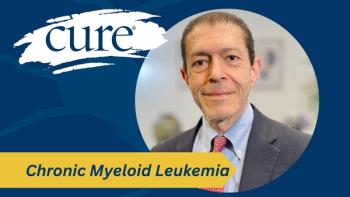
A Thank You to Nurses and the Support That Lasts Beyond Cancer Care
Key Takeaways
- Transitioning to lifelong IVIG infusions was challenging, requiring acceptance of a new normal and frequent treatments.
- Angela, a compassionate nurse, significantly improved the patient's experience by providing personalized care and emotional support.
After cancer, lifelong infusions were tough — until nurse Angela’s care and kindness reminded me that true support can last long after treatment ends.
When I first entered the infusion room, I looked around and said to myself, “Is this really for me?” I couldn’t believe it. I had cancer, and now I needed treatment. It was a surreal moment — one that didn’t quite feel real. Over time, I underwent treatment on three separate occasions. Thankfully, each course had a clear beginning and, most importantly, a defined end. As tough as those treatments were, I got through them, and they helped me. I am not complaining. I was grateful then, and I still am.
But as time moved on, I began getting sinus infections more and more frequently. I often needed antibiotics just to keep things under control. Eventually, my doctor ran some tests and discovered that my antibody levels were far too low. That’s when he told me I would need something new — regular IVIG infusions, a treatment involving immunoglobulin antibodies to help boost my immune system.
I began entering the infusion room for something different: IVIG. This wasn’t a temporary plan —this was something I was now told I would need every four weeks for the rest of my life. That part was a little harder to swallow. I had to make the decision to accept this new normal, and that took some time. It’s not easy knowing you’ll be tethered to lifelong treatment. It’s certainly not fun having to get poked and prodded every month while nurses search for a “good vein.” That was until I met Angela.
Angela is more than a nurse. In many ways, she’s more like an angel — and fittingly, that word is part of her name. From the moment I met her, she made a lasting impression. Angela always greeted me with a warm smile and a genuine sense of interest. She didn’t just treat me as a patient; she took the time to know me as a person. It was clear from the beginning that she cared about building a relationship. She understood that I’d be returning every four weeks indefinitely, and she chose to invest in me. In return, I wanted to get to know her, too.
One of the many reasons I never had to worry when I found out Angela would be my nurse was because she was simply the best at what she did. She was gentle and confident when starting an IV — no small thing when you’re dealing with frequent infusions. On top of that, she remembered the little things that made a big difference. I’d had a couple of bad reactions to the infusion early on, and we learned that the IVIG was dripping too quickly. Angela remembered. Without me even saying anything, she would reassure me: “Don’t worry, Linda, I know you need it to go in slowly, so you don’t get a reaction.” That attention to detail and commitment to my comfort never went unnoticed.
Angela made every visit brighter. When I saw her walking toward me, my face would light up — I honestly felt like I’d won the lottery that day. There’s just something special about her. She never made me feel like her “work.” She treated me with dignity, compassion, and joy. Her kindness was evident in everything she did — from making sure I was warm enough, to asking if I needed a snack, to offering help getting to the restroom.
It takes a very special kind of person to become a nurse. But it takes an extraordinary one to make you feel seen, safe, and valued, even during some of your most vulnerable moments. Angela, thank you. Your support is the kind that stays with a person forever.
Thank you for EVERYTHING!
For more news on cancer updates, research and education, don’t forget to





